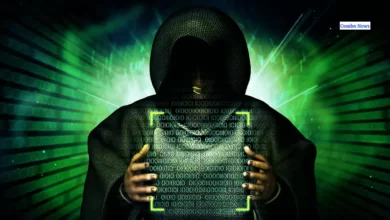All You Need To Know:Non-Fungible Tokens (NFTs)

Table of Contents
Hello friends today we will talking about Non-Fungible Tokens (NFTs). The two most widely used and dominant virtual currencies in the metaverse are bitcoin and ethereum. They are not the only digital currencies, though, that have worth. NFTs, or non-fungible tokens, have a significant impact on a variety of markets and businesses. Due to their dual economic and non-economic importance, these tokens also have a considerable impact on the digital economy.
What are NFTs?
Blockchain-based tokens or individual tokens with unique assets like works of art, media, or digital content are examples of non-fungible tokens. NFTs are essentially digital versions of tangible collectibles, to put it simply. Therefore, with an NFT, an individual would acquire an original but digital replica of the artwork coupled with exclusive ownership rights as opposed to buying a physical work of art.
Additionally, Non-Fungible Tokens function as a network of assets that may be shown and traded. The creators of these digital assets can then resell their works on cryptocurrency exchange platforms like Ethereum, where they can turn their works into digital tokens and earn royalties automatically for each sale. A loan might also be obtained using the tokens.
Why are NFTs important?
Non-Fungible Tokens are among the most amazing inventions of the century since the sale of these tokens caused the formation of a number of previously unheard-of digital platforms. These platforms gave artists, designers, and developers new ways to market and exchange their physical and digital creative products. Globally, Non-Fungible Tokens open up enormous and consistent revenue prospects for artists, content producers, collectors, and publishers. These more recent and developing platforms facilitate the sale or exchange of more digital assets.
The ability to gather actual goods like land parcels, apparel, and sports collectibles has also been made possible by NFT technology. The development of NFTs has made it simpler for producers, developers, collectors, and artists to tokenize and monetize their creations. How? Blockchains, a digital database of transactions that is duplicated and dispersed over the whole network of computer systems on the blockchain, are the foundation of Non-Fungible Tokens. Additionally, blockchains are a method of storing data in a way that makes it challenging or impossible to alter, hack, or defraud the system.
By removing middlemen and allowing creators to interact directly with clients, suppliers, or potential investors, Non-Fungible Tokens can use these digital blockchains to connect artists with audiences or for identity management. The elimination of middlemen reduces costs and enables NFT sellers to reap the full rewards of their labour. Additionally, NFT technology facilitates the development of new markets, quick and straightforward transactions, and higher earnings for artists and collectors from the sales of their works.
NFTs block the selling of counterfeit goods
Due to the prevalence of counterfeit items being sold and passed off as genuine, including apparel and artwork, fraud is a persistent problem in today’s world. This has had a devastating impact on the finances, reputations, and legitimacy of countless high-value brand names.
NFTs are developed on a blockchain, a persistent digital ledger, as was previously indicated. Each token has a distinctive design and cannot be replaced; no two tokens are alike. Each NFT acts as a virtual representation of the digital asset or collectible that is being sold. Each token can be distinguished from others by having a distinct, non-transferable identity. Thus, any digital item sold can have precise and unquestionable records of its origin, authenticity, and owner thanks to the blockchain technology utilised by NFTs. This increases the value of works for producers and prevents the sale of fake goods.
The value of NFTs
NFT sales generated an estimated $13.7 million in the first half of 2020; a year later, the same period saw almost $2.5 billion created. Again in 2021, a collection of digital artist Beeple’s Non-Fungible Tokens sold for more than $69 million. The transaction established a standard and a record for the most expensive works of digital art ever sold. The piece of art was a collage made up of Beeple’s first 5,000 working days. Twitter founder Jack Dorsey’s first tweet, “just setting up my twttr,” which became the first-ever NFT rendition of a tweet and sold for $2.9 million, serves as an example of how marketable NFTs are.
It is obvious that Non-Fungible Tokens have developed platforms and more new markets in order to generate revenue. Non-Fungible Tokens include clothes as well as digital art and real estate. The market also favours NFT fashion items, such as the $125,000 digital jacket by RTFKT that was just just sold. Recently, an NFT copy of a New York Times essay also sold for $560,000. Blockchain technology is anticipated to boost the global economy by $1.76 trillion, with NFTs contributing a bigger portion of that money, according to a PwC analysis.
The markets for digital artwork, sports cards, and rarities are being expanded by NFTs, making room for other platforms that can accept various products as long as they are worthwhile. It is therefore clear that the fast expanding Non-Fungible Tokens market benefits artists and opens up additional options for income across diverse industries, which naturally promotes economic growth. Credible trading and news site Bitcoin 360 AI provides detailed instructions on where to buy NFTs as well as additional information on how to sell NFTs.
How to buy NFTs
The majority of NFT collectibles run on Ethereum. One would need to buy Ethereum in order to purchase the tokens. People who want to purchase ETH must first create an account with a cryptocurrency exchange, from which they can send and store cryptocurrency in a digital wallet. From there, one can proceed to acquire and process their Non-Fungible Tokens by connecting their digital wallet to well-known NFT marketplace platforms like Opensea, Nifty Gateway, and Story.xyz.
Many creators have struggled to sell their works of art or realise their ideas over the years since agents and middlemen were required to access and reach particular venues, especially those who were just starting out in their fields. However, the story has altered as a result of inventions and constantly advancing technology. Artists and creators in general now have the opportunity to sell their works directly to a huge audience thanks to Non-Fungible Tokens and blockchain technology. Additionally, there is inclusive economic growth as a result of the significant inflow of money from the creative and digital industries. Global economies and sectors are transforming due to cryptocurrency, especially for the impoverished who previously had few possibilities.
Also Read: Top Reasons to Invest in Cryptocurrency








